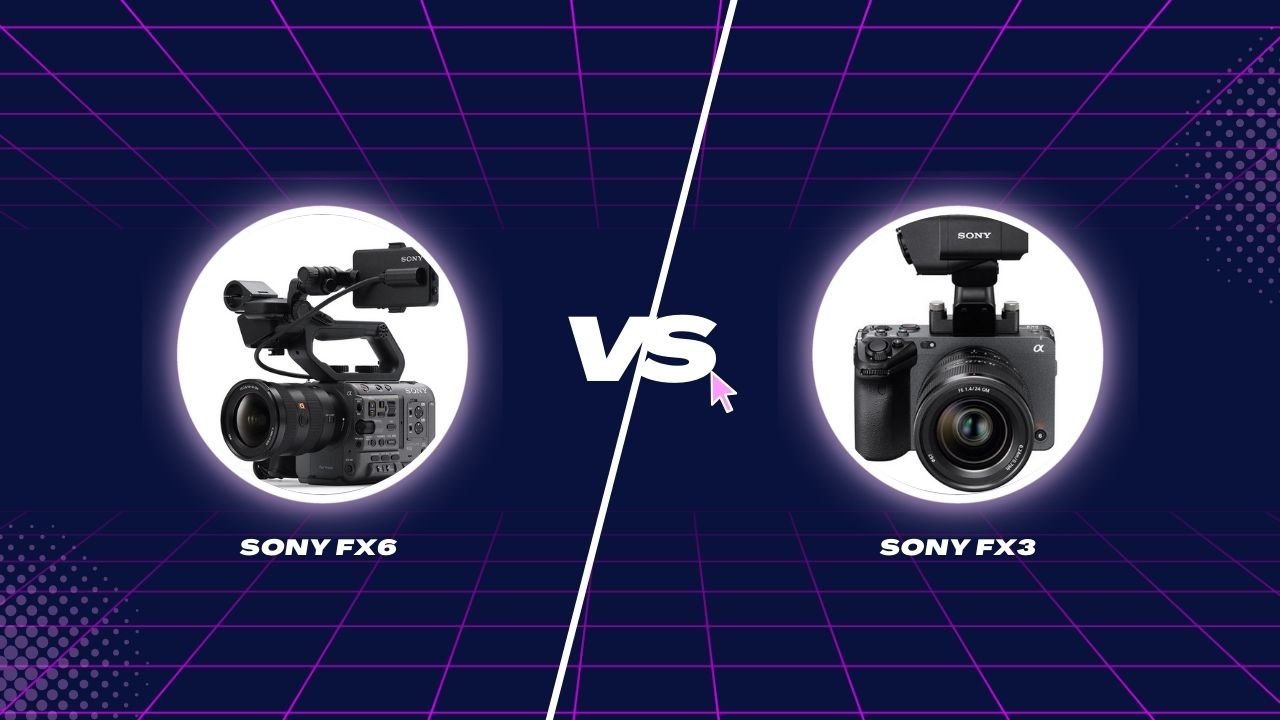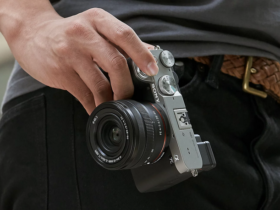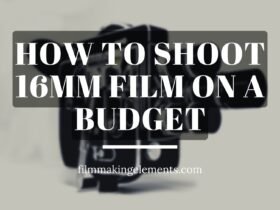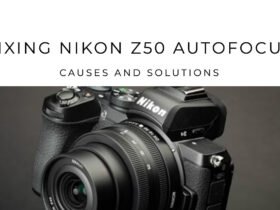Welcome back to FilmmakingElements.com, the hub for avid cinephiles and filmmakers. Today, we’ll dive deep into a much-anticipated comparison: the Sony FX6 vs the Sony FX3. These two powerful cinematic tools have been creating waves in the filmmaking world, and it’s high time we pit them against each other to see which one stands out.
Having had the pleasure of working extensively with both the Sony FX3 and the Sony FX6, I can attest that each camera brings its own set of unique features and capabilities to the table. My personal experiences with these cameras have been a blend of challenges, revelations, and ultimately, profound satisfaction. Whether you’re a budding filmmaker, a seasoned director of photography, or simply a tech enthusiast eager to learn more about the nuances of these cameras, my hands-on perspective promises to give you an insightful overview.
So, grab your director’s chair, and let’s delve into the intricacies of the Sony FX3 and Sony FX6, exploring their strengths, potential pitfalls, and determining which might be the right fit for your filmmaking journey.
Audio Options: Sony FX6 vs Sony FX3

Sound is an integral component of filmmaking. While visuals captivate the eye, it’s the audio that truly immerses the audience, making them feel as if they’re a part of the narrative.
Similarities and Differences in Audio Options
First and foremost, both the Sony FX3 and FX6 offer robust audio recording capabilities that can meet the demands of professional filmmakers. They come equipped with XLR inputs, allowing for high-quality audio capture using professional microphones. Additionally, both cameras boast multiple audio channels, providing flexibility in post-production when mixing and editing sound.
However, there are noticeable differences between the two. The Sony FX3, for instance, has an integrated audio interface on its handle, making it convenient for run-and-gun filmmakers to quickly set up and adjust their audio. The FX6, on the other hand, offers more advanced audio controls and settings, suitable for larger-scale productions where intricate sound adjustments are required.
Advantages of Sony FX3 Audio System
The Sony FX3’s audio system is particularly impressive for a camera of its class. Its ergonomically designed handle integrates the XLR inputs, allowing for a compact and convenient setup. This design choice eliminates the need for cumbersome external audio interfaces or recorders, making the FX3 a top choice for documentary filmmakers or solo operators who require agility without compromising on audio quality. Moreover, the intuitive audio controls are easily accessible, ensuring that capturing pristine sound is always a seamless experience.
Drawbacks of FX6’s System
While the Sony FX6 is undeniably a powerhouse when it comes to audio options, it isn’t without its drawbacks. The FX6’s audio module, though more advanced, is slightly bulkier compared to the FX3. This can be a hindrance for filmmakers who prioritize portability. Additionally, the plethora of audio settings, while advantageous for professionals, can be overwhelming for those unfamiliar with intricate audio setups. This can potentially lead to delays on set as filmmakers navigate the intricate controls.
Rigging and Camera Bodies: Sony FX6 vs Sony FX3

In the dynamic world of filmmaking, the body and design of a camera play a pivotal role. A camera’s size and ergonomics not only affect how it’s held but also the rigging options available for it.
Differences in Rigging Options Due to Camera Body Size
Upon close examination, the Sony FX3 and FX6 present distinct differences in their body designs. The Sony FX3, being more compact, lends itself to a variety of gimbal setups with ease. Its lighter frame means that you can easily mount it on smaller gimbals without exceeding weight limits. Moreover, the FX3’s compact design is particularly beneficial when rigging in tight spaces or during shots that require nimble movements.
The Sony FX6, with its slightly larger footprint, demands more substantial rigging setups. While this means it might be less suitable for ultra-compact gimbals, it provides more stability on larger rigs, especially during long takes. The FX6’s body also accommodates more attachment points, ideal for filmmakers who need to rig multiple accessories like external monitors, mics, and more.
Personal Preference for Handheld Shooting
Handheld shooting has always held a special place in my heart. It offers a raw, intimate connection between the filmmaker and the scene, capturing moments with an organic touch. For my style of shooting, the Sony FX3 stands out. Its ergonomic grip, combined with its lightweight nature, allows me to shoot for extended periods without fatiguing my arms. The tactile feel of the FX3 in my hands provides an instinctive connection to my subjects, enabling me to maneuver and capture scenes on-the-go with finesse.
That’s not to say the FX6 doesn’t have its merits. Its robust body provides a certain heft that can be desirable for deliberate, slow-moving shots, offering natural stabilization due to its weight. But for quick, impromptu moments, the FX3 is my go-to.
In essence, rigging and camera bodies are not just about aesthetics or tech specs; they’re about how the filmmaker interacts with the tool. Whether it’s the nimble FX3 or the sturdier FX6, the best choice always revolves around one’s personal style and the demands of the project at hand.
Features Unique to FX6

Over the years, I’ve had the privilege of working with an array of cameras, and while many offer outstanding features, there’s always something uniquely special about each.
Presence of SDI and Timecode in FX6
One of the first things that caught my eye with the FX6 was its professional-grade SDI output. This feature is a game-changer for those working in broadcast environments or needing a robust video output solution. Unlike HDMI, which is commonly found in consumer-level products, SDI provides a more secure connection, ensuring that you don’t accidentally disconnect your cable during an important shoot. It also allows for longer cable runs without signal degradation, making it incredibly beneficial for studio setups or live broadcasts.
In addition to the SDI, the FX6 boasts an in-built timecode input/output, simplifying the syncing process during multi-camera shoots or when using external audio recorders. This is a lifesaver for post-production, saving hours of manual syncing and ensuring that every frame and sound bite aligns perfectly.
Built-in NDs and Automatic ND Filter in FX6
But the surprises with the FX6 don’t stop there. I was genuinely impressed by its built-in Neutral Density (ND) filters. In the fluctuating world of outdoor shoots, where lighting conditions can shift in a matter of minutes, the FX6’s built-in NDs provide a swift and seamless way to control exposure without fumbling with external filters.
Even more intriguing is the FX6’s automatic ND filter option. This feature is a testament to Sony’s commitment to innovation. Instead of manually adjusting ND levels, the automatic ND filter dynamically adapts to lighting conditions, ensuring optimal exposure even when transitioning from, say, a sunlit street to a dimly lit interior. For documentary filmmakers or those capturing events where conditions are continually changing, this feature is nothing short of a blessing.
Shooting Modes and Image Quality: Sony FX6 vs Sony FX3

When I delve deep into the world of cinematography, two aspects always stand out for me: the shooting modes and the image quality. They are the backbone of capturing the essence and story of a scene.
1. Similarities in Shooting Modes:
Both the FX3 and FX6 have the capability to deliver high-quality all-intra 4K. Additionally, they also support 4K DCI, giving filmmakers a broader field of view and capturing more in each frame. It’s worth noting that neither camera supports 4K DCI in 120 frames per second, but they allow up to 60 frames per second. This ensures you can utilize more of the sensor while capturing motion-intensive shots.
2. Image Quality Comparison:
Diving into image quality, the FX3 and FX6 share the same full-frame Sony sensor. But despite this, when I set them side by side, subtle differences emerge. The FX3 tends to deliver a slightly crunchier look. On the other hand, the FX6, with its better roll-off and color reproduction, provides a more refined output.
While they share the same sensor, it’s essential to remember that it’s not just the sensor but the camera’s image processing that affects the end result. The built-in noise reduction in the FX3 might be the culprit behind the slight difference in their outputs. Though it doesn’t make the FX3’s image bad by any means, I personally lean more towards the FX6 when it comes to pure image quality.
3. Built-in Noise Reduction in FX3:
Noise reduction, while helpful in many scenarios, can sometimes be a double-edged sword. With the FX3, its built-in noise reduction can occasionally give a slightly artificial feel to the images, especially when striving for a filmic or cinematic look. However, it’s not something that should be a deal-breaker. A majority of users might not even notice the difference unless comparing it side by side with another camera, like the FX6.
With the FX6, I have the flexibility to adjust or even turn off noise reduction. This flexibility gives me more control over the final output, and in case of noise, I can always manage it post-production.
Codecs and Editing: A Deep Dive into the Sony FX6 vs Sony FX3

When diving into the world of cinema cameras, one can’t help but notice the buzz surrounding the Sony FX6 and the Sony FX3. Having spent significant time with both, I’ve become quite intimate with their features, especially when it comes to codecs and the editing experience.
1. Understanding Codecs:
Codecs are essentially the language your camera uses to capture and communicate image data. The type and quality of codec you choose can influence the post-production process, either facilitating smooth editing or causing compatibility and quality challenges.
2. Sony FX3’s Long-GOP Codec:
The FX3 boasts a Long-GOP, a 10-bit codec option that retains a significant amount of image data for post-production. The advantage here is that it offers a good balance between file size and quality. With 10-bit color, the FX3 captures over a billion colors, which significantly improves the camera’s color grading potential and reduces banding issues. This feature is a boon for editors, as it grants more flexibility when correcting or grading footage.
3. Sony FX6’s Dual Speeds:
The FX6, on the other hand, offers two speeds in its codec selection. While this might seem limiting compared to the FX3’s Long-GOP, there’s a significant difference in application. The FX6’s highest-quality setting provides exquisite detail for those important shots, while its lowest quality (which is still impressive) is handy for less critical scenes or when storage space is a concern.
4. 16-bit RAW Capability:
Both the FX6 and FX3 offer the ability to shoot in 16-bit RAW when paired with an external recorder like the Atomos Ninja V. This is where both cameras shine in tandem. 16-bit RAW recording means capturing even more data than the 10-bit codec, resulting in images that have an incredible amount of flexibility in post-production. Whether you’re looking to push your colors, recover shadows, or highlight details, the 16-bit RAW capability ensures that your editing potential is maximized.
5. Editing Experience:
In practical terms, editing footage from these cameras is a dream. Both codecs are well-supported across major editing software platforms. The 10-bit and 16-bit recordings, in particular, are generous when it comes to color grading. There’s a lot of ‘information’ in the shadows and highlights, allowing for recovery of details that might otherwise be lost with inferior codecs.
Low Light Performance and Dual Base ISO: Sony FX3 vs Sony FX6
1. The Dual Base ISO
Both the FX3 and FX6 boast dual base ISO technology.
- Sony FX3 & FX6:
- Low Base ISO: 800 (when shooting in CineEI mode)
- High Base ISO: 12,800
Having a high base ISO of 12,800 ensures optimal performance in low-light scenarios, as the sensor can collect more light, making for clearer images in dim conditions.
2. Noise Reduction and Image Quality
- Sony FX3: Exhibits a slightly “crunchier” look. The built-in noise reduction can sometimes produce artifacts in very dim conditions.
- Sony FX6: Has adjustable noise reduction, giving filmmakers more latitude in choosing how noise appears in their final image.
3. S-Log2 and S-Log3: Maximizing Dynamic Range and Grading Flexibility
Sony’s S-Log2 and S-Log3 are logarithmic gamma curves that enhance the dynamic range in your footage, ensuring richer details in both shadows and highlights.
- S-Log2: This is often preferred when maximizing dynamic range is the goal. It provides excellent details in shadows but requires careful exposure to avoid noisy dark regions, especially in low light.
- S-Log3: This curve is closer to the Cineon Film curve and is designed for better color grading in post-production. While it captures a bit less dynamic range than S-Log2, it offers smoother gradations. This is beneficial in low light, providing a more consistent tone without harsh transitions.
4. Utilizing S-Log in Low Light
When shooting in low light conditions:
- Expose Properly: Always aim for proper exposure. Underexposing can introduce noise, especially in shadow areas. Using tools like histogram or waveform monitors can help.
- LUTs (Look-Up Tables): Using monitoring LUTs while filming can help you visualize the final look, but remember, the flatter profile captures more data, so don’t be put off by its milky appearance on set.
- Post-Production: When grading, noise reduction tools can be handy. Noise becomes more apparent after grading, so using software like Neat Video or DaVinci Resolve’s noise reduction can assist in achieving cleaner footage.
- Use ISO Sensibly: If filming in S-Log in low light, avoid going beyond the high base ISO of 12,800. Pushing the ISO higher can introduce noise that’s hard to correct in post.
5. Practical Testing
While the FX3 and FX6 both handle low light admirably, their in-built noise reduction systems can affect S-Log footage differently, especially when grading. The FX3’s automatic noise reduction might interfere more with post-production grading, while the FX6 offers more control.
User Experience: Sony FX3
The Sony FX3, the compact entry in Sony’s Cinema Line, promises a lot to filmmakers, especially those looking for a blend of mobility and performance.
Ergonomics & Design
The first thing that stands out with the FX3 is its ergonomic design. It feels comfortable in hand, somewhat akin to a DSLR but with more cinema-centric features. The multiple mounting points are a boon for attaching various accessories, providing versatility in shooting scenarios.
Image Quality
Sony’s S-Cinetone color profile, which is also found in their higher-end cinema cameras, offers exceptional out-of-the-box colors. The full-frame sensor also ensures that you get a great dynamic range and low-light performance.
Ease of Use
The FX3 combines the best of Sony’s Alpha series and professional cinema cameras. This marriage results in a camera that’s both intuitive for those familiar with mirrorless systems and powerful enough for professional video work.
Advantages: Sony FX6 & Standout Features
Sony’s FX6, while bearing semblance to the FX3 in some aspects, is a league apart, especially when it comes to professional filmmaking features. Some of its standout advantages include:
Shutter Angle Control
Unlike the typical shutter speed control found in consumer cameras, the FX6 offers shutter angle control, a staple in cinema cameras. This ensures consistent motion blur, especially when changing frame rates, a crucial feature for filmmakers.
ND Filters
The electronic variable ND filter on the FX6 is nothing short of revolutionary. It allows for smooth adjustments to exposure without having to change the aperture, shutter speed, or ISO. This means maintaining the desired depth of field and motion blur becomes simpler than ever.
Superior Build & Additional I/O
The FX6 boasts of a robust build, catering to the demanding environments of professional shoots. The inclusion of professional-grade inputs and outputs, XLR audio, SDI, and more, make it apt for high-end productions.
Client Perception & Camera Choices
Interestingly, while the technical prowess of a camera is vital, the perception it creates can be equally crucial in a professional setting.
Bigger is Often Perceived as Better
Many clients, especially those not deeply familiar with the nuances of filmmaking, often associate the size and complexity of a camera setup with its quality. A bigger camera, might be favored by clients purely because of the “professional” look it exudes.
The Trade-Off
While larger cameras can sometimes offer features not found in their compact counterparts, they may also introduce challenges. They can be cumbersome, require more setup time, and be less versatile in tight shooting spaces.
Educating the Client
It becomes pivotal to educate clients about the capabilities of compact cinema cameras like the FX3 and FX6. Demonstrating their prowess and explaining how technology has evolved can often sway perceptions. After all, the end product’s quality is what truly matters, and both the FX3 and FX6 are more than capable of delivering top-notch results.
In summary, while the choice of camera plays a role in both the technical and perceptual aspects of filmmaking, it’s the talent behind the camera that truly brings a vision to life.
- Also Read: Red Komodo vs Canon C70 Which Is Better
- Also Read: Top 5 Sony Alpha 7 III Alternatives
- Also Read: Filmora vs Davinci Resolve Which Is Better










Got a Question?
Find us on Socials or Contact us and we’ll get back to you as soon as possible.